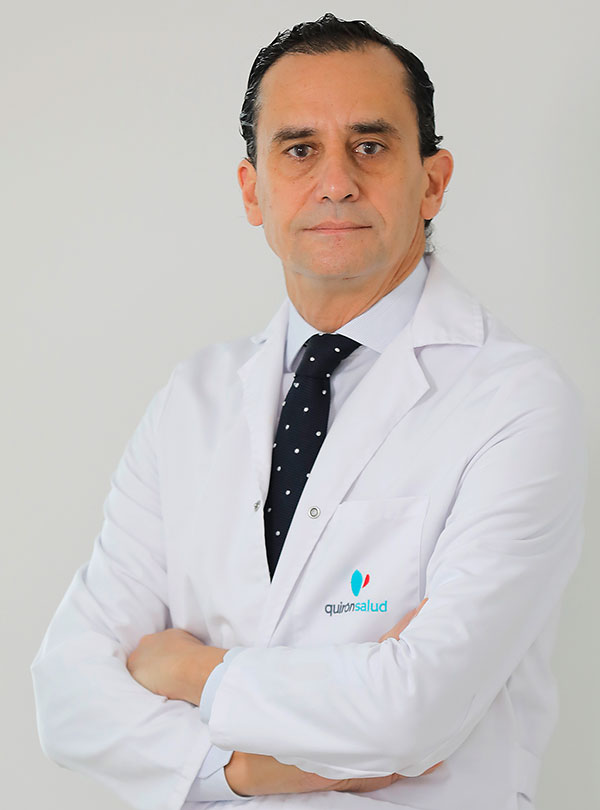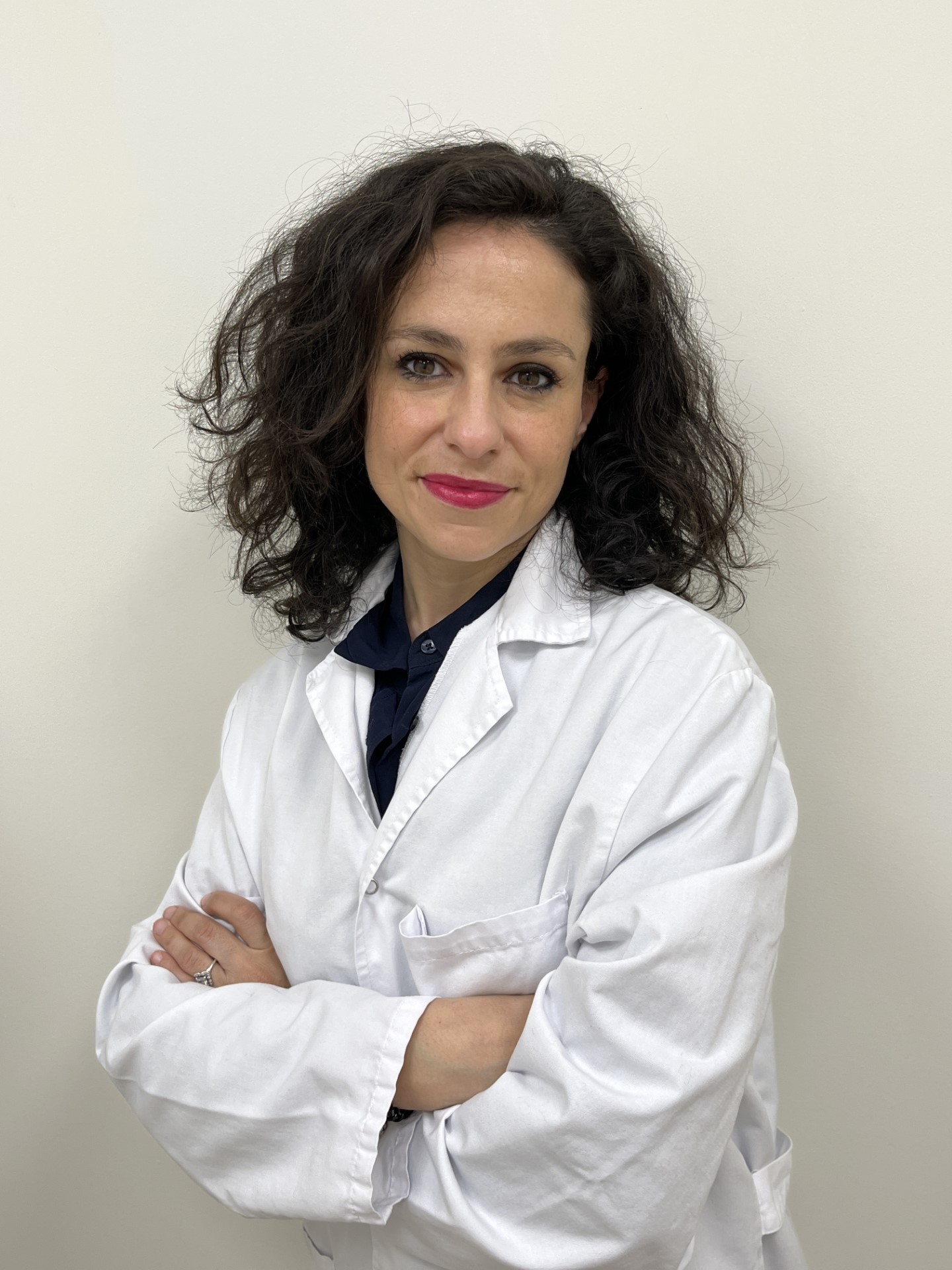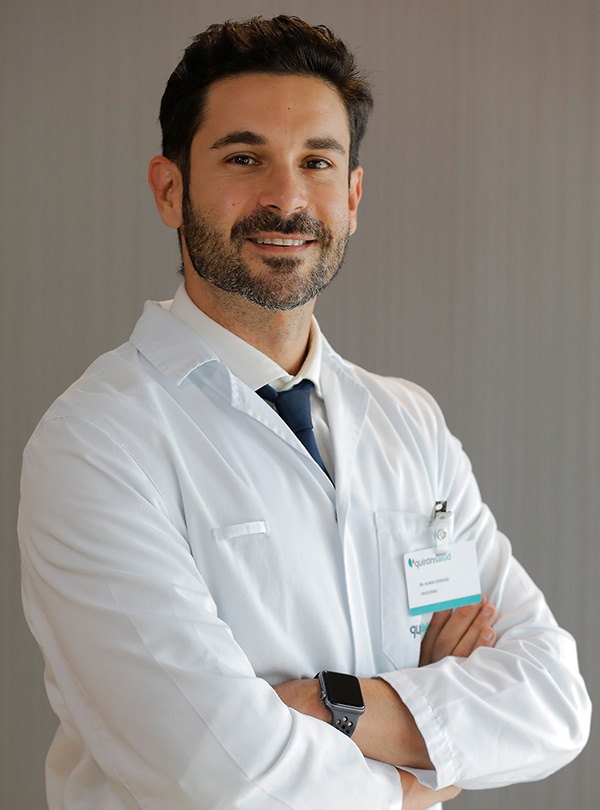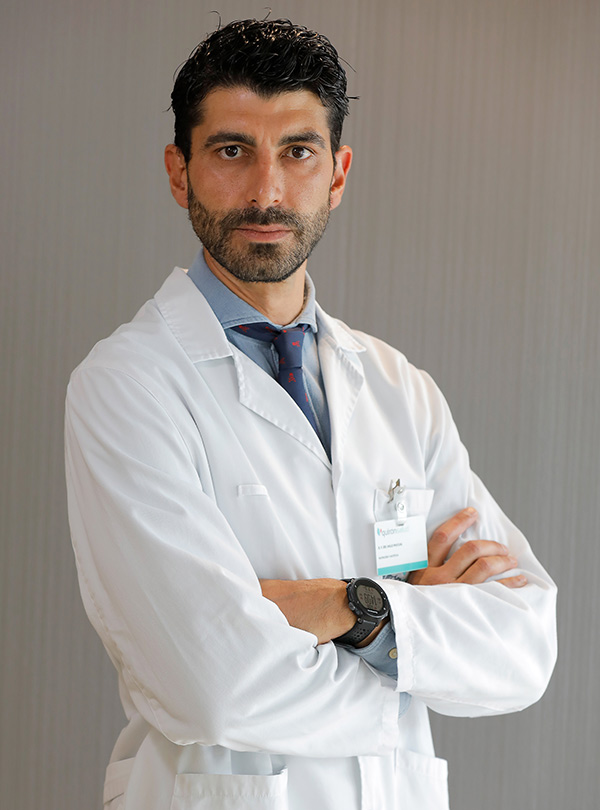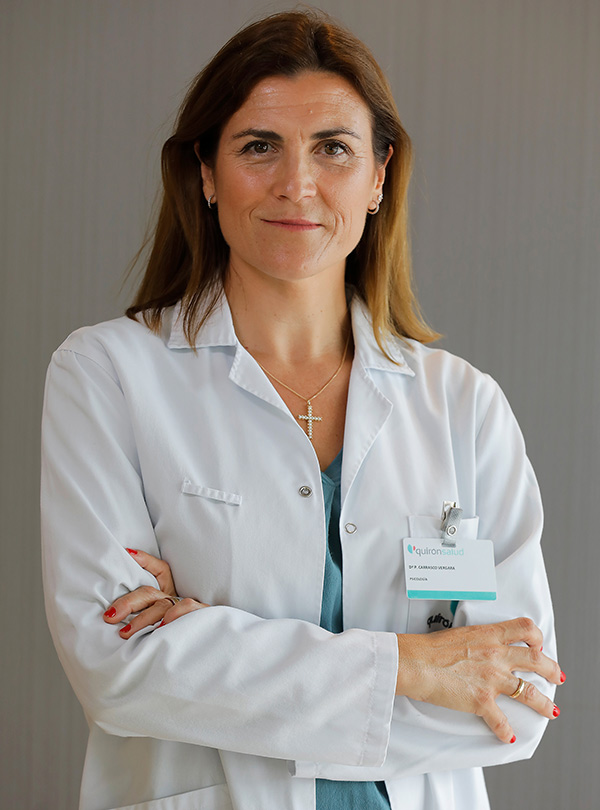WHAT DOES IT INVOLVE?
Bariatric surgical techniques help patients lose excess weight through restrictive procedures, malabsorptive procedures, or a combination of the two (combined technique). When choosing the most appropriate technique for each patient, factors such as eating habits, BMI, age, associated comorbidities, surgical risk, and more must be taken into consideration.
Bariatric surgery is fast and safe. At Quirónsalud, patient safety, above all else, is the top priority. With the aid of new medical technologies and advances in state-of-the-art medical tools, we guarantee excellent results for our interventions.
These techniques are performed laparoscopically because of the many advantages: lower rates of surgical wound infection, reduced postoperative pain, shorter hospital stays, and faster recovery times.
The two most commonly used techniques are:
- Gastric Bypass
- Vertical Sleeve Gastrectomy
Gastric bypass
Combination technique. A series of surgical modifications are made to the stomach and digestive system to achieve smaller gastric capacity while, simultaneously, reducing the absorption of fats. In addition to losing weight, this restriction also helps treat or resolve comorbidities associated with obesity. It is also known as a Roux-en-Y gastric bypass.
The procedure is performed in two stages:
- Stomach restriction: creation of a small gastric pouch (about 20-50 cc) that is separated from the rest of the stomach to limit intake.
- Gastric diversion: gastrojejunal anastomosis in Roux-en-Y with variable length of the jejunum, which causes the malabsorption component.
Through gastric bypass, the amount of calories and nutrients absorbed is greatly limited. In addition, because the stomach is smaller, this limits the amount of food eaten and a feeling a fullness or satiety is achieved quicker.
Gastric bypass achieves greater weight loss than restrictive techniques and associated diseases tend to go into remission to a greater degree.
Technique: Minimally Invasive Laparoscopic Surgery
Anesthesia: General
ICU Stay: 12-24h
Hospitalization Time: 48-72h
(Graphics and video from Medtronic with virtual intervention)
Vertical sleeve gastrectomy
Restrictive technique. Part of the distensible portion of the stomach is removed, creating a smaller lengthwise space (from 60 to 100 cc.) for food intake while preserving digestive function and the natural filling and emptying system. In this technique some 80% of the stomach is removed yet the stomach continues to function normally.
The vertical sleeve gastrectomy technique causes hormonal and metabolic changes that produce feelings of fullness and satiety, leading to weight loss and improvement in problems associated with obesity.
The advantages of this technique include:
- It is the surgery technique that alters the anatomy the least.
- Suitable response to metabolic diseases.
- Weight loss of 80% of excess weight.
- Requires less intake of vitamin supplements post-surgery.
Therefore, both the recovery and return to normal daily living is shortened by one week post-procedure.
Technique: Minimally Invasive Laparoscopic Surgery
Anesthesia: General
ICU Stay: 12-24h
Hospitalization Time: 48-72h
(Graphics and video from Medtronic with virtual intervention)
MEDICAL TEAM
Prestigious experts in the treatment of obesity and overweight
We have a comprehensive clinic and multidisciplinary team comprised of multiple specialists: expert surgeons in metabolic and bariatric surgery techniques, endocrinologists, nutritionists, psychologists, specialists in exercise and fitness education, and more.
In addition, our patients can choose from a wide range of services at the Quirónsalud Sagrado Corazón Hospital, and the experts they may need from any specialized units: Intensive Care, Anesthesiology, Internal Medicine, Radiology, etc.


